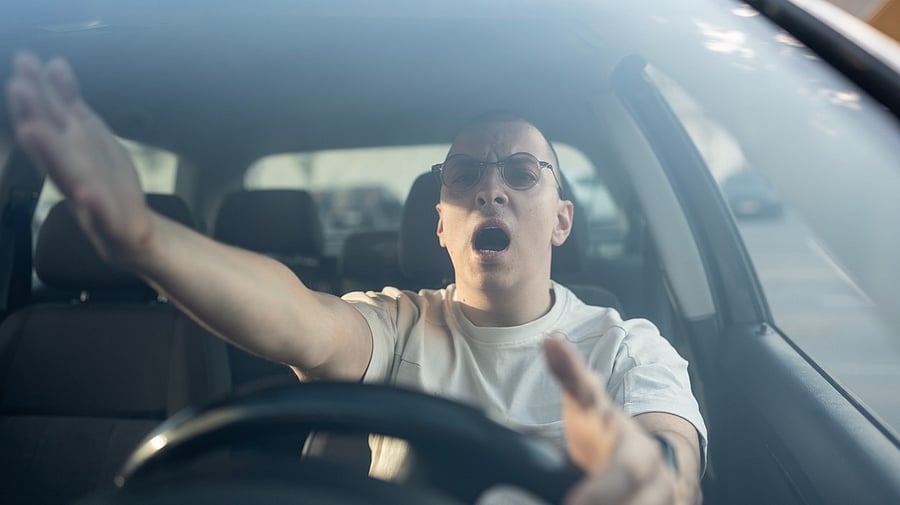
Representative image.
Credit: iStock Image.
New Delhi: The Supreme Court has said applying sudden brakes without any warning in a highway would make the car driver negligent in road accident cases.
A bench of Justices Sudhanshu Dhulia and Aravind Kumar said in a highway, high speed of vehicles is expected and if a driver intends to stop his vehicle, he has a responsibility to give a warning or signal to other vehicles moving behind on the road.
Holding a car driver as 50 per cent liable in a road accident case, Justice Dhulia, in his July 29, 2025 judgment on behalf of the bench, did not agree to his contention that he had suddenly applied the brakes as his wife was pregnant and she had a vomiting sensation.
S Mohammed Hakim, a 20-year-old engineering had to suffer amputation of left leg as he dashed his motorcycle into the rear side of the car and fell on the right side of the road in Coimbatore on January 07, 2017. The bus coming from behind drove over the appellant, which finally led to the accident.
Allowing his plea for enhancement of compensation, the bench said, "In our view, the concurrent finding that the appellant was definitely negligent in not maintaining a sufficient distance from the vehicle moving ahead and driving the motorcycle without a valid license is correct."
But at the same time, the bench pointed out, it cannot be ignored that the root cause of the accident is the sudden brakes applied by the car driver.
"The explanation given by the car driver for suddenly stopping his car in the middle of a highway is not a reasonable explanation from any angle,'' the bench said.
The court held the appellant as liable for contributory negligence but only to the extent of 20%, while making the car driver and bus driver as liable for negligence to the extent of 50% and 30% respectively.
The court computed total amount of compensation as Rs 1,14,24,066 but reduced it by 20 per cent due to contributory negligence by the appellant, to be paid to him by the insurance companies of both the vehicles, within four weeks.
In the case, the Motor Accident Claims Tribunal exonerated the car driver and determined the negligence of the appellant and the bus driver in the ratio of 20:80. It put the contributory negligence of 20% on the appellant for not maintaining a sufficient distance from the car.
The Madras High Court, however, held the car driver and bus driver liable for negligence to the extent of 40% and 30% respectively and made the appellant liable for 30% contributory negligence.
